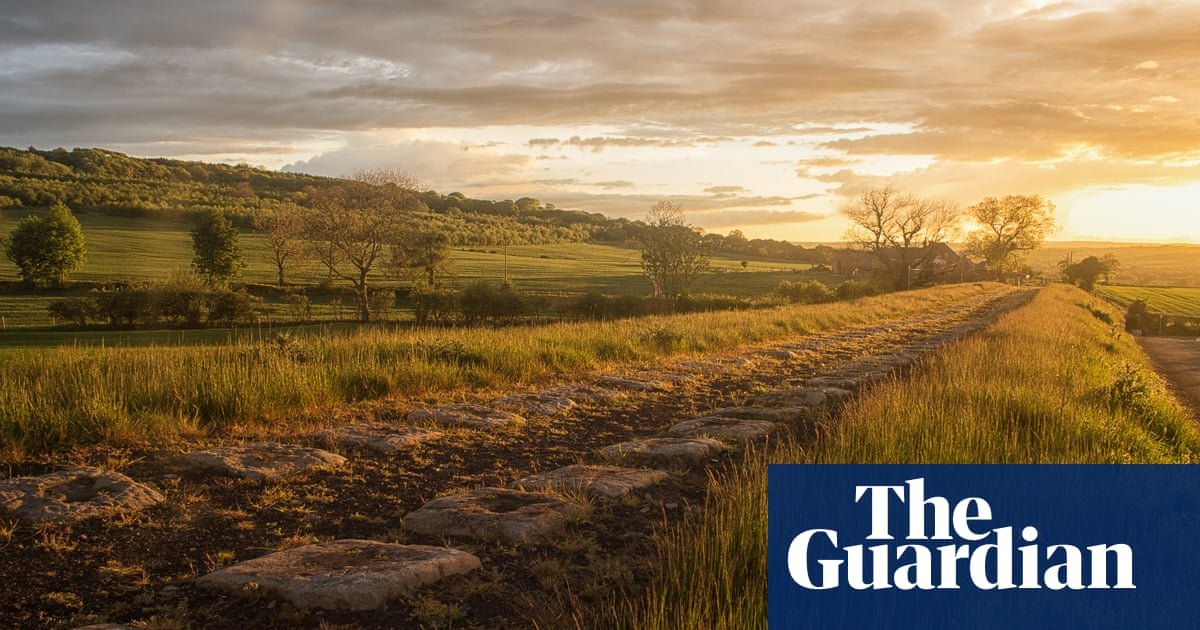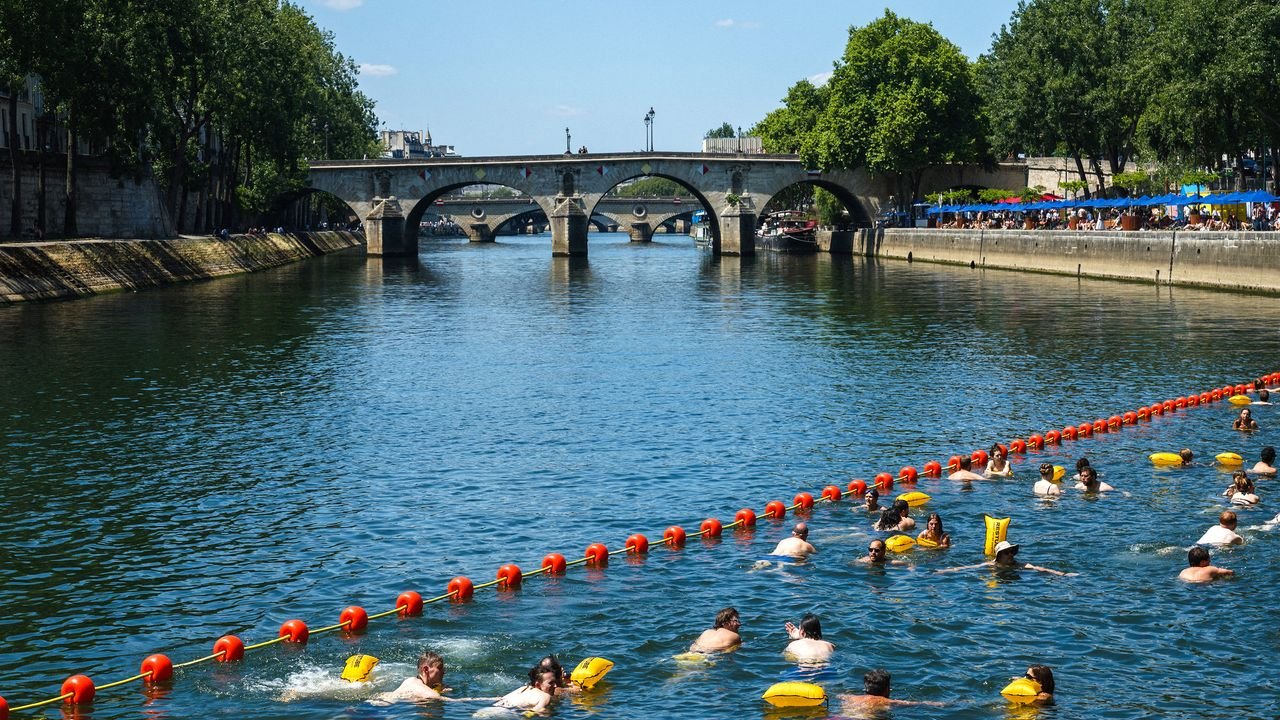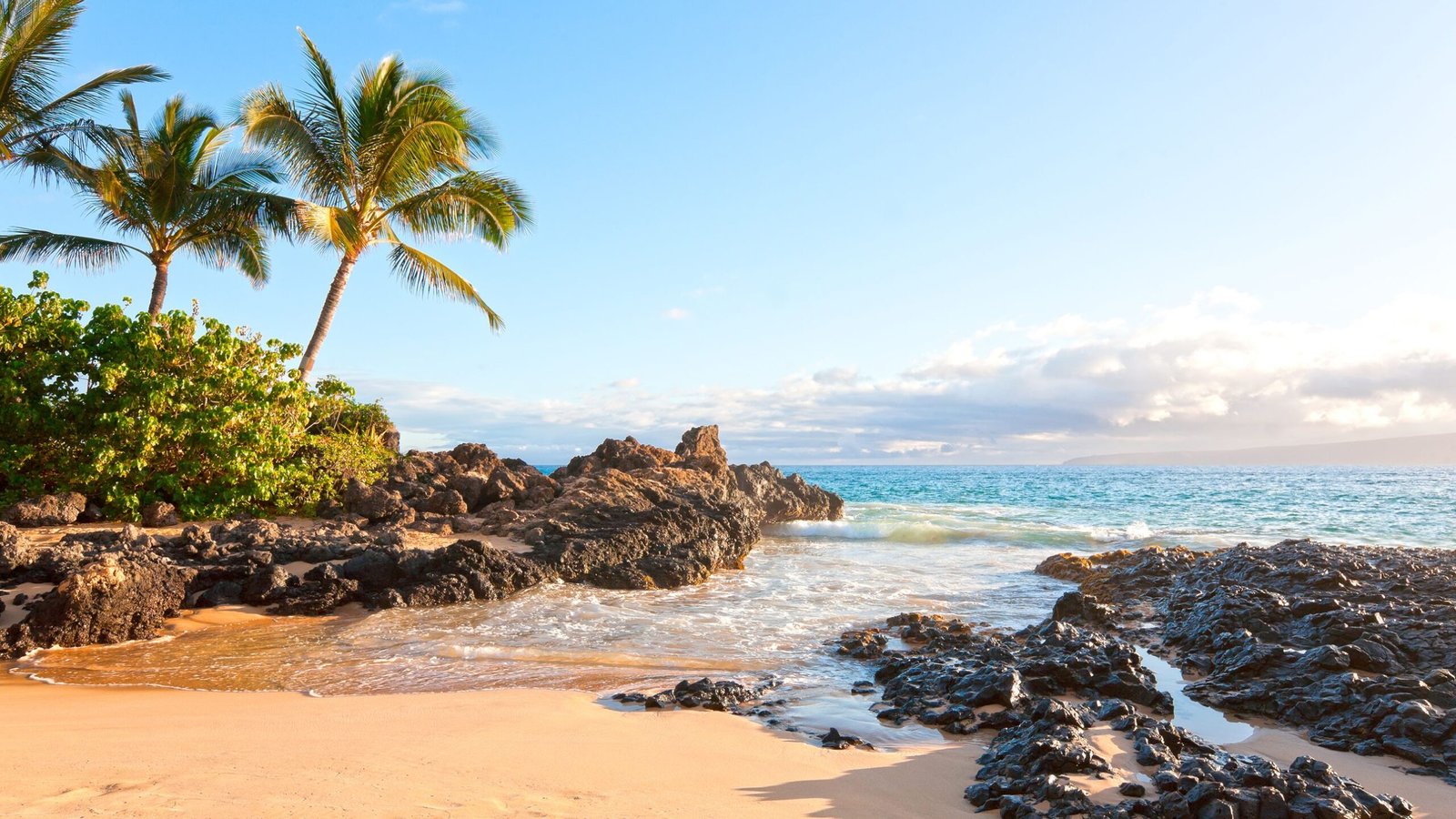Solo Travellers
‘The railway that got the world on track’: a walk through 200 years of history in County Durham | Walking holidays

It was as strange a sight as you could stumble upon in the English countryside. As a muggy summer’s day began outside Shildon, County Durham – rain threatening, bees drowsy in the hedgerows – I found myself standing on an embankment, surveying two rows of colossal stone teeth jutting through the earth. It looked as if someone had buried a sleeping giant.
“You wouldn’t believe it by looking at it, but this is one of railway history’s most amazing feats,” my companion, rail expert Richie Starrs, said as we gazed down at the molars beneath our feet. A closer look revealed they were abandoned rail sleepers, laid out between the hawthorns and along which coal wagons were once pulled uphill by steam traction locomotives. “This is the Brusselton Incline, a section of the original Stockton and Darlington Railway. Nationally, it’s a story that’s not well known, but it’s one we’re rightly proud of.”
For those interested in such rail history, this is a year like no other. Two hundred years ago, on 27 September 1825, the 26-mile Stockton and Darlington Railway opened as the world’s first public railway, making Shildon the world’s first railway town. And the lessons learned there helped the north-east, then Britain, Europe and the world grasp the importance of rail travel, first for transporting coal and lime, then, decisively, for passengers. It is “the railway that got the world on track”.
A focal point of this year’s bicentennial celebrations throughout Britain (see Railway 200 for details on hundreds of events) is County Durham’s new multi-use S&DR Trail of Discovery. Launching this month as part of the multi-arts S&DR200 festival, the meandering greenway follows the original 26-mile route from Witton Park Colliery near Bishop Auckland to Stockton Riverside and will, its founders hope, stimulate interest in the region’s rail history – and give a shot in the arm to the “left behind” pit communities along the way. There is a buoyant mood around the anniversary, but that doesn’t dispel the melancholy that has lingered over much of the rail line since the coalfields were exhausted and the Shildon Wagon Works, once described as “the jewel in British Rail’s crown”, was closed.
There would be some who find this all too trainspotterish, but not Starrs, S&DR200’s project manager, or Niall Hammond, volunteer chair of the Friends of the S&DR, both of whom joined me on the first completed section of the trail, a five-mile ramble from the Brusselton Incline to Heighington station, the world’s first train station, at Newton Aycliffe.
Over the coming months, the trail – rich in history – will be transformed with 17 information boards and newly commissioned art murals, plus a podcast and augmented reality game, devised to add colour. Fittingly, you can also hop on a train between many of the milestones along the route.
The idea, Niall told me, is to encourage travellers to walk, eat and stay on the trail for two to three days, but also spark wider regeneration for the area. According to the Ministry of Housing, Communities and Local Government, County Durham remains one of the most deprived areas in England. “This is more than history for people who like rail tracks and iron,” he told me. “The whole point is to make it count for locals. We’re doing up buildings, cleaning up areas and showing why the world was changed from here. It’s urban regeneration in action.”
Once my eyes had learned to read the signs of rail history in the landscape, despite the absence of so much of it, it became easier to imagine how this tiny corner of County Durham changed the world. Along a stretch of the reclaimed rail line through Shildon, impressions of former goods sheds, an iron warehouse, loading bays and an engine house appeared next to tired houses and an empty pub.
We passed a coaling drop, admiring the handsome brickwork arches and columns that once saw wooden chutes rapidly unload coal into hoppers and a row of railway workers’ cottages, now memorials to those who dedicated their lives to the tracks. There was no whiff of engine oil, only bluebells and primrose.
The newest part of Shildon’s compelling train story is at Locomotion, a museum that opened its £8m New Hall last year. It holds Europe’s largest indoor collection of historic locomotives (a mightily impressive 99 engines) and is the temporary home of a 150-year-old bronze statue of the great north-east rail engineer Robert Stephenson, after its removal from London Euston during construction works for HS2, Britain’s controversial high-speed railway. Alongside his influential father, George, who designed the first locomotive for the Stockton and Darlington Railway, Robert shaped rail history, and taking pride of place inside is his world-renowned locomotive Rocket, built in 1829 and on loan from York’s National Railway Museum.
after newsletter promotion
Amid all this, another highlight: Locomotion has a buzzy cafe with Eurostar seating and cakes, including a syrupy ginger loaf right from the Stephenson family cookbook. The book, also part of the National Railway Museum’s collection, lists more peculiar novelties from the 1840s, including recipes for birch wine, English champagne, mince “pyes” and calf foot gilly, a pudding made by boiling a calf’s foot. Thankfully, that was not on the menu.
Another good place to step through the looking-glass is Hopetown Darlington, an eight-minute train journey from Heighington to North Road station, which unloads passengers beside another superlative: the Skerne Bridge, the world’s oldest railway bridge that has remained in continuous use. The open-air rail museum, with 3 hectares (7.5 acres) and an exhibition in a Victorian-era station, is an arsenal of detail, with a dust-free archive of 30,000 heritage artefacts.
The trivia is half the fun. When a message was to be delivered from a moving train to a station, I learned, the note was tucked inside a slit potato and simply flung from the window. Amazingly, the story of the Stockton and Darlington Railway is on the Japanese school curriculum, but not in England.
In its great engineering hall, I was reminded of the UK’s contribution to railways the world over. Robert Stephenson went on to help create the Grand Trunk Railway in Canada, as well as the first railroad in Egypt. His work directly influenced the Norwegian Trunk Railway and the first railway in Argentina.
Rightly, all of this and more will be celebrated across the UK this summer – from Inspiration, Railway 200’s unique exhibition train, which is touring 60 stations (from 27 June), to the largest ever assembly of rolling stock at Derby Litchurch Lane Works, the country’s largest train factory (The Greatest Gathering, 1 to 3 August). Essentially, it is an education in the benefits of rail travel and the art of slowing down at home. Or, perhaps, it’s better to think of this as a story about people, communities and the tracks that help bring them together.
S&DR 200 runs to November 2025 across County Durham and the Tees Valley. Railway 200 runs to the end of the year, with events nationwide. The trip was provided by This is Durham and Visit England
Solo Travellers
How to Go Swimming in the Seine, If You Must

Théo (who preferred not to provide his last name), a Frenchman who moved to Paris a year ago for a tech job, found it thrilling to swim in such a setting: “I’ve walked and cycled along the Seine many times, but this was a unique opportunity to swim surrounded by beautiful architecture I’ve always seen from a different angle.” He compared the feeling to urban swimming in Copenhagen and Zurich. “Although the pristine waters of Lake Zurich, these were not!”
Despite lingering concerns about historical contamination from industrial runoff and sewage overflow (issues that plagued the Seine for decades), strict safety protocols have reassured most swimmers. For example, all must wear yellow lifebuoys around their waists, not only for visibility but to prevent drowning in case of fatigue or a cramp. Additionally, daily bacterial monitoring has proven effective in keeping swimmers safe: This week, the three official swimming sites were closed due to heavy rains; significant rainfall can overwhelm stormwater systems, leading to spikes in bacteria levels, including E. coli and enterococci.
“What I’d love is to swim for more than just these two months,” says nutritionist Ariane Grumbach, who has done leisurely laps in the Seine several times. For now, the experience is limited to July and August, the driest and warmest months when water quality remains most stable. More than 50,000 swimmers have participated in the experience since the sites’ openings on July 5, with no reported health issues. City officials view this as a crucial pilot phase before expanding access more broadly in 2026. If all goes well, this brief summer season could mark the beginning of a beloved new Parisian ritual.
How to go swimming in the Seine in Paris
Want to have your own Seine swim? Read on for how to go swimming in the Seine, and which of the three official sites is best for you. And a reminder: Though swim caps are usually required in municipal pools, they are not obligatory in the Seine—all you need is a proper swimsuit. For more information, visit Paris.fr.
Bras-Marie
Swimming hours: 8 a.m. to 11:30 a.m. Monday-Saturday; 8 a.m. to 5:30 p.m. on Sunday
Right off the Sully – Morland stop on the Paris Metro, this is the smallest of the three sites and can welcome 150 swimmers at a time. Swimming hours are shorter during the week due to tourist boat traffic. There are no changing cabins available at this location (but there are restrooms), so swimmers should plan to come suited up. Children must be at least 14 years old to swim at this location.
Bercy
Swimming hours: 11 a.m. to 9 p.m. daily
This is the largest of the three sites, accommodating 700 people simultaneously (300 in the water), and located near the Metro’s Bercy stop. There are actually two bathing areas here, separated by a lateral protection to allow swimmers and boats. Restrooms, changing cabins, and showers are available. Children aged 10 and up who know how to swim are permitted.
Bras de Grenelle
Swimming hours: 10 a.m. to 5:30 p.m. daily
This is the only site of the three with a secure pool for children and families (40 to 60 centimeters—about 14 to 24 inches—deep), which can accommodate 200 people at a time. Children must be 14+ years old to swim in the bottomless area; children 3+ years old accompanied by a parent in the secure pool. Get there via the Champ de Mars Tour Eiffel stop on the Metro.
Solo Travellers
13 Best Beaches in Maui, From Quiet Coves to Surfing Strongholds

The best beaches in Maui are the stuff of our summer daydreams. On the island, whale pods arcing parallel to over-ocean rainbows, epic waves that crest and crash one after the other, and grottoes fit for a fairytale mermaid are not rare sights. Completely surrounded by the balmy North Pacific, Hawaii’s second biggest island enjoys a wealth of experiences that highlight the tropical island as a destination that is as diverse as it is idyllic. Soak in the sun along the cabana-skirted shores of Wailea, or explore the hidden coves of Hana for some low-key R&R. Fancy yourself more of an adventurer? Take to the backdrop of rugged Upcountry cliffs and rainforests, or dive into the expansive underwater playground before you and snorkel around the island’s clear-as-glass waters. With 120 miles of coastline, there’s no shortage of shores to get your fill. Here, we’ve hand-picked the 12 best beaches in Maui for sun, sand, and surf.
Read our complete Maui guide here, which includes:
Solo Travellers
Tracee Ellis Ross top tips for traveling solo might surprise you

Tracee Ellis Ross is a seasoned solo traveler. The 52-year-old actor has been traveling by herself since she was 25. And now, she’s sharing the many lessons learned from her trips over the years.
In Solo Traveling with Tracee Ellis Ross, which premieres on July 25, audiences will follow her on solo adventures to Morocco, Mexico, and Spain.
“Something clicked. I’m responsible for my own happiness,” Tracee explained in an exclusive clip from the show. “So much of what solo traveling is, is about not waiting for something in order to experience my life.”
When it comes to packing, Tracee has her go-to essentials. “There’s always one bathing suit, a flip flop, and a little dress I can roll up,” Tracee told Travel + Leisure about her packing essentials. “And there’s always two undies.”
Why just two? She explained that she washes her delicates in hotel sinks using shower gels. “If I’m gone for a month on this trip, you can’t pack a month’s worth of underwear,” she said. “How do you do that? They take up a lot of space.”
After her comment circulated online, Tracee clarified her system: “I pack two pairs in my carry-on…in case my luggage doesn’t make it,” she wrote to her 11.3 million Instagram followers. “This is hilarious.”
The Black-ish actress and daughter of music icon Diana Ross, grew up traveling with her mom for work and even living in places like Paris and Switzerland. Those experiences shaped her approach to travel.
“[I] really learned how to find home inside myself,” Tracee told Travel + Leisure. “[Travel] allowed me to see the similarities between human beings no matter where we are.”
In a recent Instagram post, Tracee showed the realities of traveling – sitting on luggage to make sure all her clothes fit and lounging in hotel pools. She captioned the post: “I hope [Solo Traveling with Tracee Ellis Ross] reminds all of us that we can live our lives courageously on our own terms and be our best selves, by ourselves, out in the world.”
Tracee says that traveling solo “means I can do what I want when I want.”
Her advice for anyone curious about traveling solo? “Start by going to dinner by yourself on a Friday night. See if you can do that. And you might not be a person who can do that. You might say, ‘I’m not doing that ever again.’ Then you’re not somebody who can go on vacation by yourself.”
As for Tracee, she will continue solo traveling.
“My life is really busy,” she told Savannah Guthrie and Willie Geist on TODAY with Jenna & Friends. “I go away by myself to decompress and enjoy the luxury of being.”
-

 Brand Stories2 days ago
Brand Stories2 days agoBloom Hotels: A Modern Vision of Hospitality Redefining Travel
-

 Brand Stories1 day ago
Brand Stories1 day agoOlive Living: India’s Intelligent, Community-Centric Hospitality Powerhouse
-

 Destinations & Things To Do3 days ago
Destinations & Things To Do3 days agoUntouched Destinations: Stunning Hidden Gems You Must Visit
-

 AI in Travel3 days ago
AI in Travel3 days agoAI Travel Revolution: Must-Have Guide to the Best Experience
-

 Brand Stories3 weeks ago
Brand Stories3 weeks agoVoice AI Startup ElevenLabs Plans to Add Hubs Around the World
-

 Brand Stories2 weeks ago
Brand Stories2 weeks agoHow Elon Musk’s rogue Grok chatbot became a cautionary AI tale
-

 Asia Travel Pulse3 weeks ago
Asia Travel Pulse3 weeks agoLooking For Adventure In Asia? Here Are 7 Epic Destinations You Need To Experience At Least Once – Zee News
-

 AI in Travel3 weeks ago
AI in Travel3 weeks ago‘Will AI take my job?’ A trip to a Beijing fortune-telling bar to see what lies ahead | China
-

 Brand Stories3 weeks ago
Brand Stories3 weeks agoChatGPT — the last of the great romantics
-

 Brand Stories2 weeks ago
Brand Stories2 weeks agoHumans must remain at the heart of the AI story
